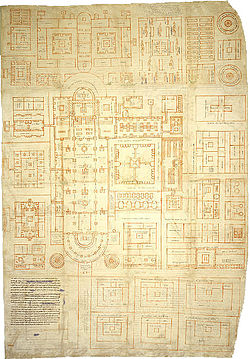
Gozbert (died 4 April 850 (?) in Rheinau) was abbot of the Abbey of Saint Gall from 816 until 837 and also abbot of Rheinau Abbey until 850. The beginning of his term of office in Rheinau is unknown.

Gozbert (died 4 April 850 (?) in Rheinau) was abbot of the Abbey of Saint Gall from 816 until 837 and also abbot of Rheinau Abbey until 850. The beginning of his term of office in Rheinau is unknown.
As monk of Saint Gall, Gozbert is documented as deacon in 798, as priest in 811 and as dean between 813 and 816. In the year 816, he was elected abbot. He succeeded in loosening the dependency of the Abbey of Saint Gall from the Bishopric of Konstanz to which the town Saint Gall belonged. On 3 June 818, he received immunity from Emperor Louis the Pious, which was later confirmed by Louis the German. Moreover, Gozbert was assured of the continuing free election of the abbot in the monastery; a privilege that had, less than a hundred years before, cost the founder of the monastery, Otmar, his freedom.
Gozbert focused on the expansion of the monastery estate. His acquisitions and the donations he received were a significant foundation for the future prince abbey. Gozbert centralised the administration of the monastery property and reformed the documentary management as the profession of registrar was regarded as a stepping stone to a better position in the monastery. Under Gozbert's regency, Saint Gall became a cultural centre, as many still existing documents from his time affirm. He also paid special attention to the abbey library, and had close ties to one of the main scribes there, Wolfcoz. [1]
Gozbert was the recipient (and employer?) of the Plan of Saint Gall which was made around 820 in Reichenau. How closely his monastery actually resembled this ideal plan is unknown. What is known, however, is that the building process began with the new construction of the Basilica of Gall (Gallusbasilika) in 830, which was sanctified after 835 in the presence of the Bishops Ulrich I. von Basel, Wolfleoz von Konstanz and Erlebald von Reichenau.
In the year 837, Gozbert resigned from his office as abbot. Possibly, this was due to political uncertainties in which the monastery had become involved when the sons of Louis the Pious struggled over his succession.
In the literature, the following career is stated:
"As first abbot, [in Rheinau Abbey] in the middle of the 9th century, we encounter Gozbert who was summoned from Saint Gall by Wolfene. He is followed by Antwart, Wolfen, the restorer of the monastery († 878), Wichram; ..." [2]
Gozbert's exact year of death is not known. It is possible that he died in relation to his successor Anwarth's assumption of office in Rheinau in the year 850.
Ulrich of Eppenstein served between 1071 and his death as Abbot of the powerful Abbey of Saint Gall. Ulrich was prominent as a supporter of Emperor Henry IV during the civil wars that erupted out of the power struggles between the emperor and the papacy during the closing decades of the eleventh century.
Konrad von Gundelfingen was prince-abbot of the Princely Abbey of Kempten from 1284 until 1302. He was also anti-abbot of the Princely Abbey of Saint Gall from 1288 until 1291, appointed by King Rudolf I.
John II was the abbot of Saint Gall and of Reichenau and, from 760 to 782, was the Bishop of Constance.
Wolfleoz von Konstanz, or Wolleozzus was bishop of the Bishopric of Konstanz from 811 to 838/39 and abbot of the Abbey of Saint Gall from 812 to 816.
Werdo was abbot of the Abbey of Saint Gall in St. Gallen.

Grimald, Latinised Grimaldus, was abbot of Weissenburg Abbey, abbot of the Abbey of Saint Gall (841–872), arch-chaplain of the East Frankish king Louis the German (848–870) and chancellor. He was one of the founders of scholarly education in the East Franconian Empire and in St. Gall.
Hartmut von St. Gallen was abbot of the Abbey of Saint Gall.
Hartmann was abbot of the Benedictine Abbey of Saint Gall.
Manegold von Mammern was abbot of the Abbey of Saint Gall from 1121 to 1133. He descended from a noble family from the area around Untersee. He is documented for the years 1125 and 1126.
Ulrich von Sax was Abbot of Saint Gall from 1204 until his death.
Rudolf von Güttingen was Abbot of Saint Gall from 1220 and Bishop of Chur from 1224 until his death. He is documented for the first time in 1208.
Berchtold von Falkenstein was abbot of the Benedictine Abbey of Saint Gall from 1244 until 1272.
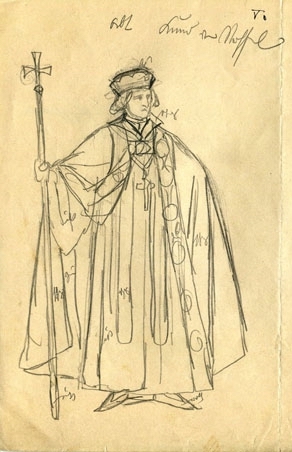
Kuno von Stoffeln was from 1379 until his death Prince abbot of Saint Gall. He descended from the family von Stoffeln with property on Castle Hohenstoffeln on the Hohenstoffeln at Hegau. He was substantially involved in the Appenzell Wars as the city refused to pay homage to him, and the Appenzellers, his subjects, even refused to pay taxes. Due to the price decline of grain after a disastrous plague epidemic, Kuno had been obliged to drastically increase taxes in order to balance the loss of revenue. He first aligned with cities at Lake Constance that were devoted to him and later with Duke Frederick IV of Austria in order to put an end to the population's attempts at freedom. He was not granted any luck in battle, however: the abbot's army lost one battle after another. Eventually, Kuno was forced to sell or lease estates in order to fill the abbey till. He left behind a completely run down monastery which had become meaningless in comparison to the aspiring city. In chronicles of the 15th century, Kuno is described as a true spectre.
Konrad von Pegau was abbot of the Abbey of Saint Gall from 1418 to 1419.
Eglolf Blarer was abbot of the Abbey of Saint Gall from 1426 to 1442.
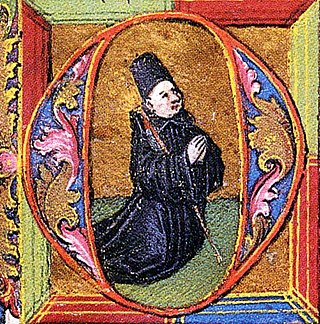
Ulrich Rösch was abbot of the Abbey of Saint Gall from 1463 to 1491. He is considered one of the most outstanding abbots of the monastery.
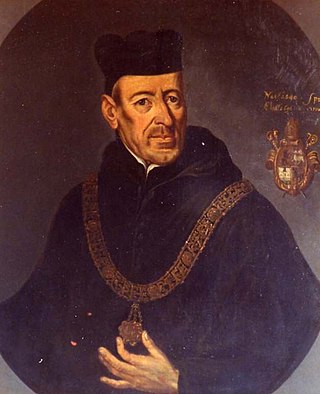
Leodegar Bürgisser was abbot of the Abbey of Saint Gall from 1696 to 1717.

Beda Angehrn was prince-abbot of the Abbey of Saint Gall from 1767 until 1796.
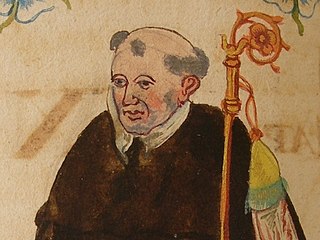
Wilhelm I Count of Montfort was prince-abbot of Saint Gall from 1281 until 1301.
Wolfcoz I was a medieval scribe and painter of illuminated manuscripts, working in the scriptorium of the Abbey of Saint Gall in present-day Switzerland.